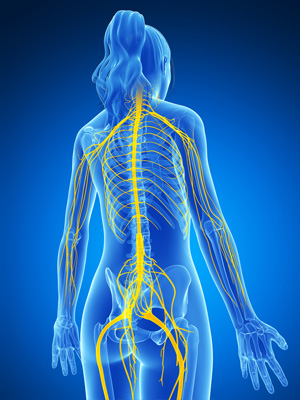
Cerebral palsy is just one of the conditions that we commonly treat at Chiltern Children’s Physiotherapy.
We cover:
- Neurological conditions
- Developmental conditions (more)
We would be happy to discuss the concerns that you have for your child and how we can help.
Neurological Conditions
The human nervous system is incredibly complex. The nervous system, (made up of the spinal cord and spinal nerves) sends and relays messages back and forth between the brain and other parts of the body (eg: muscles and organs) via the spinal cord to the peripheral nerves.
The brain is the centre that controls all bodily functions and movements, from breathing and heart rate to complex skills, like driving a car, that require us to learn a complex skill and make split second decisions based on our previous experience and what is happening at that moment.
When a message comes into the brain from anywhere in the body, the brain tells the body how to react. Unfortunately the brain and nervous system can become damaged, this may happen before, during or after birth. The difficulties that a child presents with, depends on the area of the brain or nervous system that is damaged, and the severity of the damage. The damage may result in difficulties with moving, cognition, sensory processing, communication, perception and behaviour.
Cerebral palsy (CP) describes a group of non-progressive disorders affecting muscle tone, movement and posture, which limit activity. They are caused by damage that occurred in the developing foetal or infant brain. Other neurological conditions that occur in childhood may present with symptoms similar to those of Cerebral Palsy, such as some genetic and metabolic disorders; and Acquired Brain Injuries (head injuries, encephalitis, meningitis, near drowning incidents and paediatric stroke).
The child’s presentation depends on the nature of the damage that has occurred and the age of the child at the time of injury. The damage that occurs to the brain results in abnormal postural tone (muscle tone) and patterns of movement. The child’s motor development is affected and delayed. The movement disorder may be accompanied by difficulties with cognition, sensory processing, communication, perception, behaviour and epilepsy. The damage to the brain does not progress but due to the fact that the damage occurred to a developing brain; the affect that it can have on a growing child’s posture and movement can change over time. Unfortunately it is not possible to repair brain damage, however physiotherapy can help the brain to learn or relearn a movement or motor skill.
Our approach to treatment is based on the Bobath concept, neuro-developmental treatment, but includes other approaches to enable a function based and eclectic approach. We work with the child and their family to facilitate the development of the child’s motor skills with normal patterns of movement
How can Chiltern Children’s Physiotherapy help?
- Specialist Paediatric Physiotherapists understand brain and childhood development and are able to apply this knowledge to the children that they assess and treat
- Will identify the areas of a child’s gross motor (movement) development that are delayed
- Will identify abnormalities in postural tone (muscle tone) and patterns of movement
- Will identify how abnormalities in muscle tone impact on the child’s abilities to move and function
- Provide physiotherapy treatment and advice through therapeutic handling, play and activities to facilitate the development of the child’s gross motor skills
- We provide advice and home programmes of activities which families and carers are encouraged to continue with between physiotherapy sessions, to ensure carry-over and maximise functional potential
- Provide postural management programmes and advice
If you would like more information on Cerebral Palsy please click here
Neurological Conditions and Growth
Surgery and other Medical Interventions


